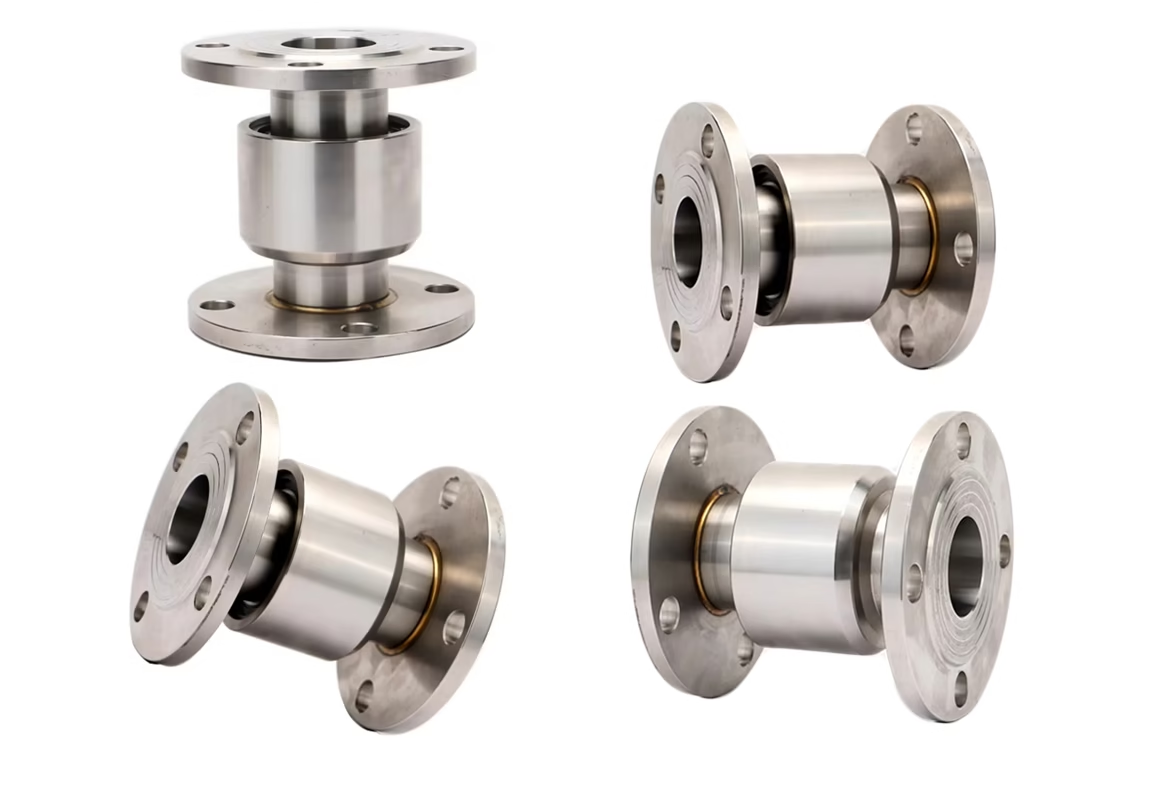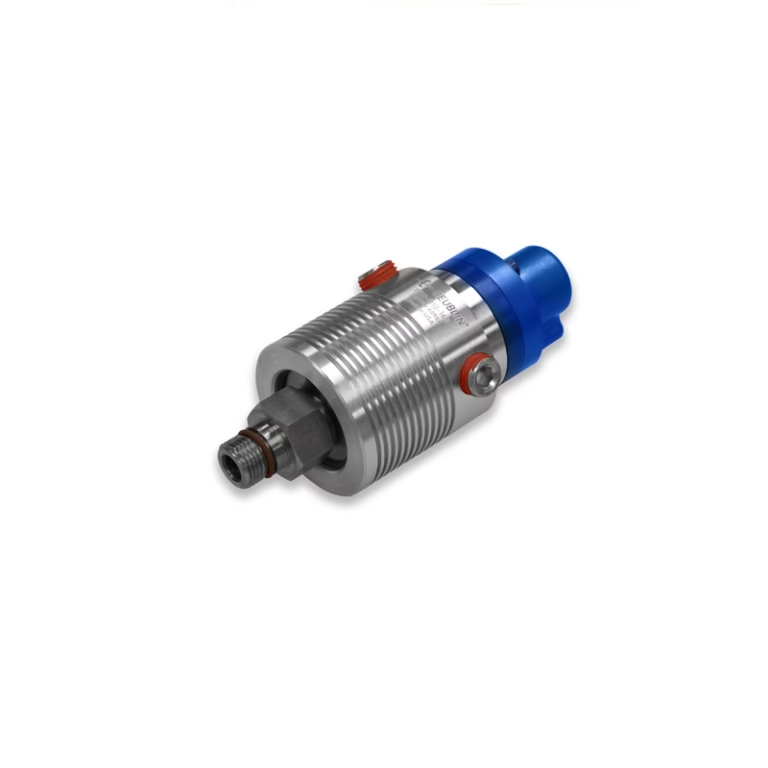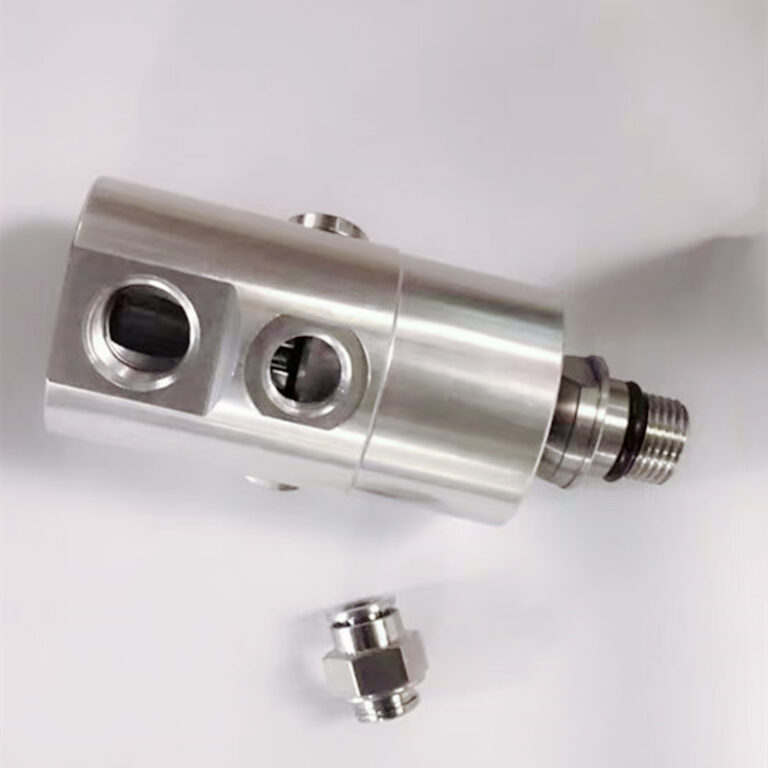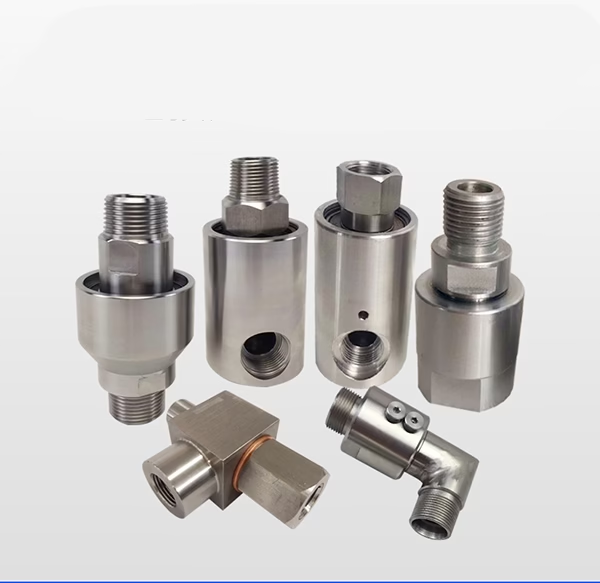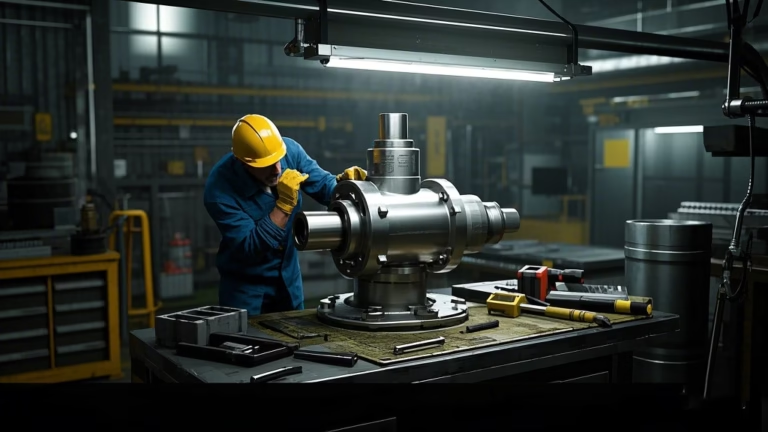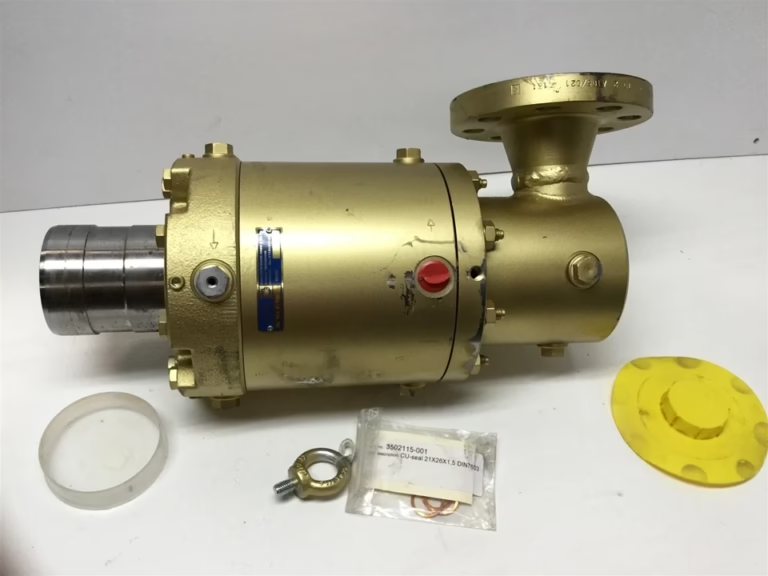What is Hydraulic Hose Rotary Joint?
Introduction
In fluid power systems, hydraulic hose rotary joints play a crucial role. These components enable the transfer of hydraulic fluid between stationary and rotating parts of machinery, ensuring smooth operation and efficient power transmission. Whether you work in manufacturing, construction, or any industry relying on hydraulic equipment, understanding these joints is essential for maintaining and optimizing your systems. In this blog post, we’ll explore what hydraulic hose rotary joints are, how they function, their types, applications, and more.
What Are Hydraulic Hose Rotary Joints?
Hydraulic hose rotary joint, also called hydraulic swivels or rotary unions, serve as mechanical devices that facilitate hydraulic fluid transfer while accommodating rotational movement between two components. Industries use them in various applications requiring a hydraulic power supply to rotating parts, such as industrial machinery, construction equipment, and aerospace systems.
The primary function of a hydraulic hose rotary joint is to create a leak-free connection between a stationary hydraulic line and a rotating component, like a shaft or drum. It enables continuous hydraulic fluid flow, allowing the connected part to rotate without damaging the hose or disrupting the hydraulic system’s operation.
How Do Hydraulic Hose Rotary Joints Work?
A hydraulic hose rotary joint typically includes several key components that work together to transfer hydraulic fluid and enable rotation. Here’s how they function:
1. Housing
Manufacturers construct the housing, the outer part of the rotary joint, from materials like stainless steel, brass, or aluminum, depending on application requirements. This component provides structural support and encloses internal parts. Engineers design the housing to mount on the machinery’s stationary part and connect to the hydraulic supply line.
2. Rotor
The rotor, the rotating part of the joint, connects to the machinery’s rotating component. Made from durable materials like stainless steel, it features a central bore for hydraulic fluid flow. Bearings within the housing support the rotor, enabling smooth rotation.
3. Seals
Seals are critical components that prevent hydraulic fluid leakage between stationary and rotating parts. Rotary joints use various seals, such as mechanical seals, O-rings, and lip seals. The choice of seal depends on factors like operating pressure, temperature, and hydraulic fluid type. These seals create a tight barrier while minimizing friction to ensure smooth rotation.
4. Bearings
Bearings support the rotor and allow low-friction rotation. Located between the rotor and housing, they can be ball bearings, roller bearings, or sleeve bearings. The type of bearing depends on load requirements, rotational speed, and the joint’s operating environment.
5. Passageways
Internal passageways in hydraulic hose rotary joint allow hydraulic fluid to flow from the stationary supply line to the rotating component. Engineers design these passageways to ensure smooth, unrestricted fluid flow, minimizing pressure drops and enhancing hydraulic system efficiency.
When the machinery operates, hydraulic fluid enters the rotary joint through the stationary supply line and flows through the housing and rotor passageways. As the rotor spins, seals prevent fluid leakage, while bearings reduce friction. The fluid then exits the joint and reaches the rotating component, supplying the necessary power for operation.
Types of Hydraulic Hose Rotary Joint
Manufacturers offer several types of hydraulic hose rotary joints, each designed for specific applications:
1. Single-Channel Rotary Joints
The simplest type, single-channel joints, transfer a single hydraulic fluid between stationary and rotating parts. They feature one internal passageway and are ideal for low rotational speed and moderate pressure applications.
2. Multi-Channel Rotary Joints
Engineers design multi-channel joints to transfer multiple hydraulic fluids simultaneously. With multiple internal passageways—each for a specific fluid—these joints suit applications needing different fluids (e.g., oil, water-glycol, synthetic fluids) for various machine components. Depending on needs, they can have 2, 4, 6, or more channels.
3. High-Pressure Rotary Joints
Built to handle high-pressure hydraulic systems, these joints use materials and seals capable of withstanding extreme pressures (ranging from hundreds to thousands of psi). Industries employ them in hydraulic presses, injection molding machines, and oil and gas exploration equipment.
4. High-Speed Rotary Joints
Engineered for high rotational speeds, these joints use precision-balanced components and specialized bearings to minimize vibration and ensure smooth operation at high speeds. Common applications include wind turbines, industrial centrifuges, and high-speed spindles.
5. Specialty Rotary Joints
Designed for niche applications, specialty joints include:
Corrosion-resistant joints with housing and components made from anti-corrosive materials for harsh environments.
Hygienic joints meet strict standards for food and beverage applications.
Aerospace-grade joints adhere to stringent reliability and performance requirements.
Applications of Hydraulic Hose Rotary Joints
Hydraulic hose rotary joints see use in diverse industries due to their ability to transfer fluid to rotating parts:
1. Industrial Machinery
In lathes, milling machines, and robotic arms, these joints transmit hydraulic power to rotating components, enabling smooth and precise movement. For example, a lathe’s rotary joint supplies fluid to the rotating spindle, which holds and spins workpieces during machining.
2. Construction Equipment
Machines like excavators, loaders, and cranes rely on these joints to transfer fluid to rotating parts such as booms, buckets, and slewing mechanisms. This ensures efficient power delivery, allowing equipment to perform tasks effectively—e.g., an excavator’s joint maintains a continuous fluid supply to the rotating boom for digging and lifting.
3. Aerospace Industry
Aircraft landing gear systems, flight control surfaces, and engine accessories use these joints, designed for high reliability, lightweight construction, and resistance to extreme temperatures. In the landing gear, a joint transfers fluid to rotating wheels, enabling smooth braking and retraction.
4. Agriculture Equipment
Tractors combine, and sprayers use rotary joints to transfer fluid to rotating wheels, axles, and spray booms. This improves machinery efficiency and control—for instance, a sprayer’s joint ensures uniform pesticide application by maintaining fluid flow to rotating booms.
5. Oil and Gas Industry
Drilling rigs, wellheads, and pipeline systems employ these joints to handle high pressures and harsh conditions. They transfer fluid to rotating drill bits, mud motors, and valves, ensuring safe and efficient production and transportation.
Benefits of Using Hydraulic Hose Rotary Joints
1. Leak-Free Operation
High-quality seals in these joints prevent fluid leakage, ensuring efficient and safe system operation. This is crucial in applications where fluid is expensive or leaks pose environmental risks.
2. Smooth Rotation
Bearings reduce friction between moving parts, extending the joint and machinery lifespan. Smooth rotation also enhances system performance, ensuring precise movement of rotating components.
3. Versatility
Available in various types and sizes, these joints suit diverse applications. They handle different fluids and operate under varying pressure and temperature conditions, making them a popular choice across industries.
4. Reduced Maintenance
Durable materials and components mean these joints require minimal upkeep. High-quality construction withstands continuous operation, lowering costs and boosting productivity.
5. Improved Safety
By eliminating leaks, these joints protect operators and the environment from hazardous fluid exposure. Smooth rotation also reduces the risk of mechanical failures and accidents.
Factors to Consider When Selecting Hydraulic Hose Rotary Joints
1. Operating Pressure
Choose a joint with a pressure rating higher than your system’s maximum operating pressure to ensure safety and reliability.
2. Rotational Speed
Ensure the joint can handle your application’s required RPM. High-speed setups may need specialized joints designed to minimize vibration.
3. Temperature
Select a joint with materials and seals compatible with your system’s temperature range (both maximum and minimum values).
4. Type of Hydraulic Fluid
Verify that the joint’s materials and seals are compatible with your fluid’s properties (viscosity, acidity, etc.) to prevent damage.
5. Application Requirements
Consider factors like the number of channels, size, weight, and installation method to meet your specific needs.
Installation and Maintenance Tips
Installation
Follow the manufacturer’s instructions carefully.
Ensure the installation area is clean and debris-free.
Use appropriate tools to align and secure the joint to stationary and rotating parts.
Check for leaks after installation and adjust as needed.
Maintenance
Regularly inspect for wear, damage, or leaks.
Replace worn seals or bearings promptly.
Lubricate moving parts per the manufacturer’s guidelines.
Keep the joint clean and replace the hydraulic fluid regularly.
Market Trends and Innovations
The global hydraulic rotary joint market, projected to reach $2.8 billion by 2030, grows due to:
Automation Demand: Rising use in robotics and automated warehouses.
Renewable Energy: Expansion of wind and solar infrastructure.
Miniaturization: Development of compact joints for medical devices and drones.
Smart Technology: Integration of IoT-enabled sensors for real-time monitoring.
Future Directions
Emerging technologies shaping the industry include:
3D Printing: Enables custom, complex geometries for niche applications.
Nanomaterials: Enhance seal durability and heat resistance.
Predictive Maintenance: AI algorithms to forecast component failures.
Sustainability: Bio-based lubricants to reduce environmental impact.
FAQ
Q1: Which industries use hydraulic hose rotary joints, and for what purposes?
Common industries include construction (excavators, drill rigs), manufacturing (rotary tables, packaging equipment), marine (crane rotations, steering systems), and energy (wind turbines, oil rigs). These joints ensure fluid transfer under high pressure (up to 5,000 PSI) and speed (over 200 RPM), preventing hose damage and leaks.
Q2: How can I troubleshoot leaks and prevent them?
Leaks often result from worn seals, misalignment, or contamination. Inspect for debris, replace worn seals, and ensure proper hose alignment. Maintenance practices include filtering fluids (ISO 18/15/13 or cleaner), lubricating bearings, and pressure testing under load.
Q3: What factors guide joint selection for my application?
Consider pressure/temperature ratings, rotational speed, fluid compatibility, port configuration, and size/weight. Consult manufacturer guidelines for torque ratings, IP protection, and certifications (e.g., ATEX for hazardous areas). Test prototypes in real-world conditions for validation.
Conclusion
Hydraulic hose rotary joints are vital for fluid power systems, enabling seamless fluid transfer between stationary and rotating machinery parts. Understanding their design, types, applications, and selection criteria helps optimize hydraulic system performance. By choosing the right joint and prioritizing proper installation and maintenance, you can ensure reliable, efficient operation across diverse industrial applications.

